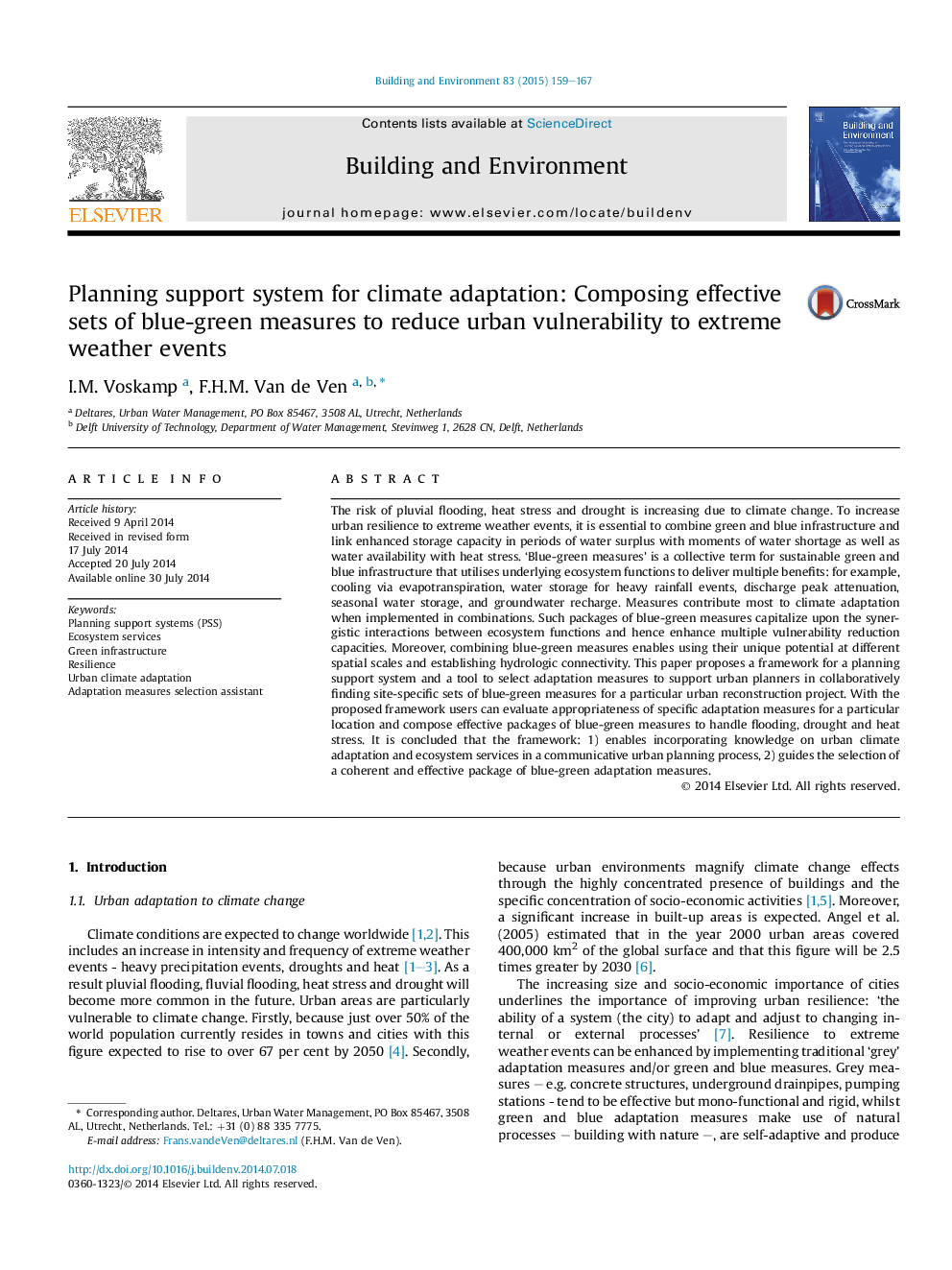| Article ID | Journal | Published Year | Pages | File Type |
|---|---|---|---|---|
| 6700091 | Building and Environment | 2015 | 9 Pages |
Abstract
The risk of pluvial flooding, heat stress and drought is increasing due to climate change. To increase urban resilience to extreme weather events, it is essential to combine green and blue infrastructure and link enhanced storage capacity in periods of water surplus with moments of water shortage as well as water availability with heat stress. 'Blue-green measures' is a collective term for sustainable green and blue infrastructure that utilises underlying ecosystem functions to deliver multiple benefits: for example, cooling via evapotranspiration, water storage for heavy rainfall events, discharge peak attenuation, seasonal water storage, and groundwater recharge. Measures contribute most to climate adaptation when implemented in combinations. Such packages of blue-green measures capitalize upon the synergistic interactions between ecosystem functions and hence enhance multiple vulnerability reduction capacities. Moreover, combining blue-green measures enables using their unique potential at different spatial scales and establishing hydrologic connectivity. This paper proposes a framework for a planning support system and a tool to select adaptation measures to support urban planners in collaboratively finding site-specific sets of blue-green measures for a particular urban reconstruction project. With the proposed framework users can evaluate appropriateness of specific adaptation measures for a particular location and compose effective packages of blue-green measures to handle flooding, drought and heat stress. It is concluded that the framework: 1) enables incorporating knowledge on urban climate adaptation and ecosystem services in a communicative urban planning process, 2) guides the selection of a coherent and effective package of blue-green adaptation measures.
Related Topics
Physical Sciences and Engineering
Energy
Renewable Energy, Sustainability and the Environment
Authors
I.M. Voskamp, F.H.M. Van de Ven,
